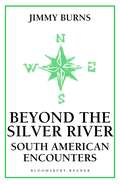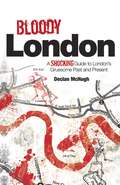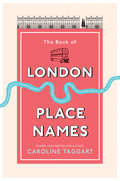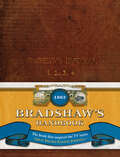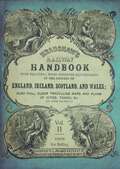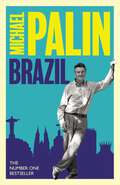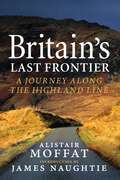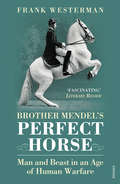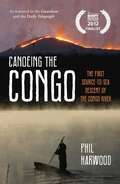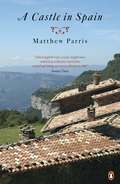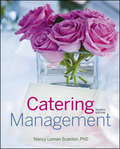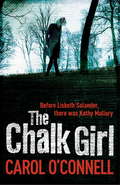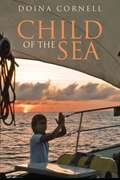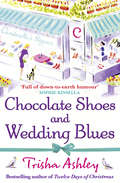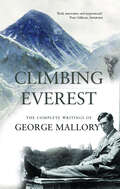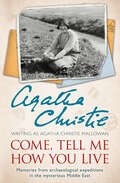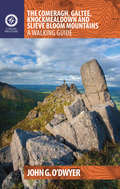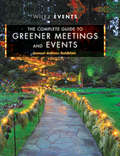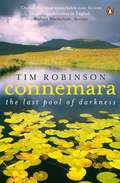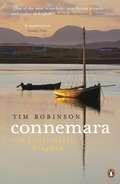- Table View
- List View
Beautiful Thing: Inside the Secret World of Bombay's Dance Bars (Books That Changed The World Ser.)
by Sonia FaleiroSonia Faleiro was a reporter in search of a story when she met Leela, a beautiful and charismatic bar dancer with a story to tell. Leela introduced Sonia to the underworld of Bombay's dance bars: a world of glamorous women, of fierce love, sex and violence, of customers and gangsters, of police, prostitutes and pimps. When an ambitious political politician cashed in on a tide of false morality and had Bombay's dance bars wiped out, Leela's proud independence faced its greatest test. In a city where almost everyone is certain that someone, somewhere, is worse off than them, she fights to survive, and to win. Beautiful Thing is a vivid and intimate portrait of one reporter's journey into the dark, pulsating and ultimately damaged soul of Bombay.
Beyond The Silver River: South American Encounters
by Jimmy BurnsDuring the five years Jimmy Burns was based in Buenos Aires, which resulted in his award-winning study of the Falklands War and its aftermath, The Land That Lost Its Heroes, he also embarked on further-flung journeys in Argentina, Brazil, Peru, Ecuador, Bolivia and Chile. 'Each South American country is idiosyncratic - it brings out our individual fantasies and forces us to interpret anew,' writes Burns. Certainly to travel with him is to trace the footprints of history - conquest and subjugation, defiance and hope - yet to encounter at each turn a fresh observation, the unexpected. He conducts us by steam train up the Andes and down to the treacherous depths of a Bolivian tin mine. We find a hotbed of Argentine loyalties in Tierra del Fuego, beaches of bodies beautiful in Brazil and Peruvian streets where fanatical Sendero Luminoso guerrillas wage a permanent power struggle with the military. Burns introduces us to Sixto Vazquez, Indian intellectual with an unshakeable faith in legend and animism; to Tina, White Russian Duchess of Platinov, who now presides over an eerie domain of enormous moths in the Ecuadorian rain forest; to Father Renato Hevia, the editor of a Jesuit magazine in Chile who is harassed and detained if he fails to mention Pinochet in even one edition. To this journey of discovery Jimmy Burns brings all the clarity of vision and eloquence of expression for which he was awarded the 1988 Somerset Maugham Award for Non-fiction.
Bloody London: Shocking Tales from London’s Gruesome Past and Present (Crimson Publishing Ser.)
by Declan McHughWhere did the real Jack the Ripper live? Which pub in London has been used more than any other by serial killers picking up their victims? Where was the capital's Gladiators' Arena? Where in London did Anders Breivik, the Norwegian mass murderer, live as a child? Jack The Ripper (and 15 other London serial killers!), the Krays, Aleister Crowley, Ruth Ellis, Doctor John Dee, Sach and Walters the baby farmers - all these characters and more are covered in Bloody London, a unique and terrifying walk through the dark, gore-drenched streets of the capital. A must-have for fans of crime, horror, the supernatural and the simply bizarre, Bloody London will also show you: Sites of executions and unsolved murders London's creepiest cemeteries Where famous horror authors lived and worked Where the Plague originated A haunted church and many other locations... London's dark and shocking secrets are laid bare in this compendium of true stories. We dare you to look inside...
The Book of London Place Names
by Caroline TaggartEver wondered if Cheapside really is cheap, what you do in Threadneedle Street, or who the knights of Knightsbridge were?Did you know that Piccadilly is actually an insult? And that Euston Road was built because there were too many cows on Oxford Street? Or that the River Fleet was covered over partly because of a drunken butcher? Take a trip down narrow lanes, through cobbled streets and crowded markets to discover the meanings behind the city’s place names. Meet forgotten residents whose names survive in the places where they lived, such as Sir George Downing of Downing Street, and uncover tales from London’s murky past that have shaped the modern city.From famous landmarks to forgotten rivers, grand thoroughfares to lost palaces, and ancient villages swallowed up as the city grew, Caroline Taggart explains the hidden meanings behind familiar places. If you have ever wanted to learn more about the history of London and discover the people, events and stories that shaped our capital city, then come on a journey that will show you London in a new light...
Bradshaw’s Handbook
by George BradshawCollector's item, landmark in the history of the tour guide, snapshot of Britain in the 1860s – Bradshaw's Handbook deserves a place on the bookshelf of any traveller, railway enthusiast, historian or anglophile. Produced as the British railway network was reaching its zenith, and as tourism by rail became a serious pastime for the better off, it was the first national tourist guide specifically organized around railway journeys, and to this day offers a glimpse through the carriage window at a Britain long past. This is a facsimile of the actual book – often referred to as 'Bradshaw's Guide' – that inspired the 'Great British Railway Journeys' television series, possibly the only surviving example of the 1863 edition. It is an exact copy with a removable belly-band.
Bradshaw's Railway Handbook Vol 2: Tours in North and South Wales (Plus Western and Southwestern England and parts of Ireland)
by George Bradshaw'Hard to put down ... truthful and opinionated, often funny but never predictable ... the finest travelling companion.' – Michael Portillo on Bradshaw A superb guide to Britain's villages, towns and connecting railways, dating from 1866. Unavailable for many years and much sought after, this classic guide book is now faithfully reissued for a new generation. Bradshaw's Railway Handbook was originally published in 1866 under the title Bradshaw's Handbook for Tourists in Great Britain and Ireland. It appeared in four volumes as a comprehensive handbook for domestic tourists, offering a detailed view of English life in the Victorian age. Now available to a new generation of readers, it will appeal to railway, steam and transport enthusiasts, local historians, and anyone with an interest in British heritage, the Victorian period, or the nation's industrial past.
Brazil
by Michael PalinBrazil is one of the four new global super powers with its vast natural resources and burgeoning industries. Half a continent in size and a potent mix of races, religions and cultures, of unexplored wildernesses and bustling modern cities, it is also one of the few countries Michael Palin has never fully travelled. With the next Olympics to be held in Rio in 2016 and the World Cup in Brazil in 2014, international attention will be on Brazil as never before. Michael Palin’s timely book and series take a closer look at a remarkable new force on the world scene. From the Venezuelan border and the forests of the Lost World where he encounters the Yanomami tribe and their ongoing territorial war with the gold miners, Michael Palin explores this vast and disparate nation in his inimitable way. He journeys into the heart of the Amazon rainforest. He travels down the North-East coast to meet the descendents of African slaves with their vibrant culture of rituals, festivals and music. He visits the shanty towns of Rio and the beaches of Copacabana and Ipanema. He goes to Sao Paolo where the rich commute by helicopter. He travels South to meet German and Japanese communities, meets supermodels in the making and wealthy gauchos in the Pantanal before ending his journey at the spectacular Iguaçu Falls.
Britain's Last Frontier: A Journey Along the Highland Line
by Alistair MoffatThe Highland Line is Britain's last meaningful frontier. First recognised by Agricola in the first century AD (parts of its most northerly section mark the furthest north the Romans advanced), it divides the country both geologically and culturally, signalling the border between Highland and Lowland, Celtic and English-speaking, crofting and farming. In Britain's Last Frontier, best-selling author Alistair Moffat makes a journey of the imagination as well as through geography, tracing the route of the Line from the battlefield at Culloden, along the Moray coast with occasional forays into the mountains. He then swings south-west at Stonehaven before arriving at Glasgow and the Clyde. In doing so he discovers how the Line has influenced life and attitudes for thousands of years. Packed with history, myth, anecdote and sharp observation, this is a fascinating and absorbing book that offers a new perspective on our national history.
Brother Mendel's Perfect Horse: Man and beast in an age of human warfare
by Frank Westerman Sam Garrett' "When you touch a Lipizzaner, you're touching history," Westerman was once told. His elegant book offers fascinating proof' Financial Times Frank Westerman explores the history of Lipizzaners, an extraordinary troop of pedigree horses bred as personal mounts for the Emperor of Austria-Hungary. Following the bloodlines of the stud book, he reconstructs the story of four generations of imperial steed as they survive the fall of the Habsburg Empire, two world wars and the insane breeding experiments conducted under Hitler, Stalin and Ceausescu. But what begins as a fairytale becomes a chronicle of the quest for racial purity. Carrying the reader across Europe, from imperial stables and stud farms to the controversial gene labs of today, Westerman asks, if animal breeders are so good at genetic engineering, why do attempts to perfect the human strain always end in tragedy?
Canoeing the Congo: The First Source-to-Sea Descent of the Congo River
by Phil HarwoodEx-Marine Phil Harwood embarked on an epic solo journey on the Congo, the eighth longest river in the world. He faced swamps, man-eating crocodiles, snakes and spiders’ webs the size of houses. He collapsed from malaria, and was arrested. But he also received tremendous hospitality from proud people long forgotten by the Western world.
A Castle in Spain
by Matthew Parris'Stands apart... This Englishman's castle might have started as a dream, but it has ended up being an extraordinary reality' Sunday TimesWalking in the Pyrenees one spring morning Matthew Parris stumbled upon a magnificent ruined mansion standing on the edge of a line of huge cliffs. Later he was to discover that parts of the house dated back to the 14th century though it had not been completed until 1559; and that it had survived two massive earthquakes before falling into disrepair in the early 1960s. A few years later, seduced by 'one of those foolish challenges that grip us in middle life', Parris bought the house, L'Avenc, and set about restoring it to its full glory. This delightful book chronicles it all: the original discovery, the attempts to discover its history, and then the long effortful years trying to bring it back to life in the face of scepticism from family, friends and Spanish neighbours. The original edition of A Castle in Spain was published in 2005 when the renovations were a work in progress; this new edition triumphantly records all that has happened since.
Catering Management
by Nancy Loman ScanlonAn essential, up-to-date guide for catering students and professionals, Catering Management, Fourth Edition, covers all aspects of the business, (operations, sales and marketing to food and beverage service, menu planning and design, pricing, equipment, staff training, and more). The new edition is completely revised with information on sustainable and green catering practices, digital menu and proposal design, new catering industry software, and the expansion of the event market. State-of-the art marketing strategies, including social networking, web promotion, and on-demand proposal development, are also covered.
Central Park: An Anthology
by Andrew BlaunerCentral Park is perhaps the most well-trod and familiar green space in the county. It is both a refuge from the city and Manhattan's very heart; a respite from the urban grind and a hive of activity all its own. 843 carefully planned acres allow some 37 million visitors each year to come and get lost in a sense of nature. Unsurprisingly, the park also inspires a wealth of great writing, and here Andrew Blauner collects some of the finest fiction and nonfiction-- 20 pieces in all, with classics sprinkled among 13 new ones commissioned from great New York writers. Bill Buford spends a wild night in the park; Jonathan Safran Foer envisions it as a tiny, transplanted piece of a mythical Sixth Borough; and Marie Winn answers definitively Holden Caulfield's question of where the ducks go when the park's ponds freeze over. There are bird sightings and fish sightings; Jackie Kennedy and James Brown sightings; and pieces by Colson Whitehead, Paul Auster, and Francine Prose. This vibrant collection presents Central Park, in all its many-faceted glory, a 51-block swath of special magic.
The Chalk Girl: Kathy Mallory: Book Ten (Kathy Mallory #10)
by Carol O'ConnellThe little girl appeared in Central Park: red-haired, blue-eyed, smiling, perfect - except for the blood on her shoulder. It fell from the sky, she said, while she was looking for her uncle, who turned into a tree. Poor child, people thought. And then they found the body in the tree.For NYPD detective, Kathy Mallory, there is something about the girl that she understands. Mallory is damaged, they say, but she can tell a kindred spirit. And this one will lead her to a story of extraordinary crimes; murders stretching back fifteen years, blackmail and complicity and a particular cruelty that only someone with Mallory's history could fully recognise. In the next few weeks, Kathy Mallory will deal with them all ... in her own way.
Child of the Sea
by Doina CornellA Child of the Sea is the true story of Jimmy Cornell's daughter sailing around the world on the family's small yacht from the age of 7 to 14, based on Doina's diaries, letters and memories. From 1975 to 1981 the Cornell family visited 54 countries, sailed more than 68,000 miles, and travelled about the same distance overland. The story is told from Doina's point of view, although the main part of the book focuses on the family's three-year stay in the Pacific when she is aged between 10 and 13.Child of the Sea is unusual in that it gives a glimpse into a life that most young children couldn't imagine, swimming, diving and playing the days away in deserted anchorages; visiting some of the most beautiful islands in the world; falling in love with the sea in all its ever-changing moods, from balmy trade wind ocean passages to the treacherous breakers that crash onto tropical reefs, and taking a full part in sailing and handling the yacht on passage. The book also tells the story of a girl's coming of age in the South Pacific, understanding different cultures and values, and experiencing at first-hand how people judge each other depending on the colour of their skin - from the time on Easter Island when tourists mistake Doina for a Polynesian girl, to her and her brother's hostile prejudiced reception back in an English school at the end of their journey.What do children need to grow up happy and healthy? Security with their family; an element of risk; freedom to explore the world; openness to other peoples and cultures; closeness with nature and the elements and an appreciation of the environment and our finite resources. The sailing life offers all this and more, and this book captures it all.
Child of the Sea: A Memoir Of A Sailing Childhood
by Doina CornellA Child of the Sea is the true story of Jimmy Cornell's daughter sailing around the world on the family's small yacht from the age of 7 to 14, based on Doina's diaries, letters and memories. From 1975 to 1981 the Cornell family visited 54 countries, sailed more than 68,000 miles, and travelled about the same distance overland. The story is told from Doina's point of view, although the main part of the book focuses on the family's three-year stay in the Pacific when she is aged between 10 and 13. Child of the Sea is unusual in that it gives a glimpse into a life that most young children couldn't imagine, swimming, diving and playing the days away in deserted anchorages; visiting some of the most beautiful islands in the world; falling in love with the sea in all its ever-changing moods, from balmy trade wind ocean passages to the treacherous breakers that crash onto tropical reefs, and taking a full part in sailing and handling the yacht on passage. The book also tells the story of a girl's coming of age in the South Pacific, understanding different cultures and values, and experiencing at first-hand how people judge each other depending on the colour of their skin - from the time on Easter Island when tourists mistake Doina for a Polynesian girl, to her and her brother's hostile prejudiced reception back in an English school at the end of their journey. What do children need to grow up happy and healthy? Security with their family; an element of risk; freedom to explore the world; openness to other peoples and cultures; closeness with nature and the elements and an appreciation of the environment and our finite resources. The sailing life offers all this and more, and this book captures it all.
Chocolate Shoes and Wedding Blues
by Trisha AshleyA hilarious, heart-warming read from the No.1 bestselling author of The Christmas Invitation…
City of Abraham: History, Myth and Memory: A Journey through Hebron
by Edward PlattThe City of Abraham is a journey through one of the world’s most divided cities – Hebron, the only place in the West Bank where Palestinians and Israelis live side by side. It begins with a hill called Tel Rumeida, the site of ancient Hebron, where the patriarch Abraham – father of the Jews and the Arabs – was supposed to have lived when he arrived in the Promised Land. Through a mixture of travel writing, reportage and interviews, Platt tells the history of the hill and the city in which it stands, and explores the mythic roots of the struggle to control the land. He meets the Palestinian residents of Tel Rumeida, and the messianic settlers who have made their homes in a block of flats that stands on stilts on an excavated corner of the site. He meets the archaeologists who have attempted to reconstruct the history of the hill. He meets the soldiers who serve in Hebron, and the intermediaries who try to keep the peace in the divided city. The City of Abraham explores the ways in which Hebron’s past continues to inform its tumultuous present, and illuminates the lives of the people at the heart of the most intractable conflict in the world.The City of Abraham is a journey through one of the world’s most divided cities – Hebron, the only place in the West Bank where Palestinians and Israelis live side by side. It begins with a hill called Tel Rumeida, the site of ancient Hebron, where the patriarch Abraham – father of the Jews and the Arabs – was supposed to have lived when he arrived in the Promised Land. Platt tells the history of the hill and the city in which it stands, shares the stories of residents and settlers, and illuminates the mythic roots of the struggle to control the land. Through a mixture of travel writing, reportage and interviews, The City of Abraham explores the ways in which Hebron’s past continues to inform its tumultuous present.
Climbing Everest: The Complete Writings of George Leigh Mallory
by George Leigh Mallory'Compelling pieces.' Stephen Venables, Mail on Sunday 'Invaluable... [a] surprise it has taken so long to see the light of day.' National Geographic 'Expressive and emotionally literate.' Scottish Mountaineer In Climbing Everest, George Mallory (18 June 1886 - 8/9 June 1924), possibly the first man to summit Everest, takes us with him on his climbs in Britain and the Alps, culminating in his three expeditions to Mount Everest - the last of which cost him his life (a few days after the final piece in this book). Mallory was one of the first climbers to explore the emotional meaning of climbing, discarding the Edwardian stiff upper lip in the face of adventure. All his writings on climbing - here collected for the first time - started out as letters to his wife Ruth. He turned them into finely-crafted pieces read by climbers as well as arm-chair climbers.
Coast: A Journey of Discovery Around Britain's Coastline
by Nicholas CraneAlong our shores, towering cliffs from the age of the dinosaurs rise beside wide estuaries teeming with wildlife, while Victorian ports share waterfronts with imposing fortifications.And the people who have lived, worked and played on this spectacular coast - from Stone Age fishermen to seafarers, chart-makers and surfers - have an incredible tale to tell.Coast: Our Island Story is an enthralling account, sparkling with geography, history, adventure and eccentric characters, told with Nick Crane's trademark charisma and wit.
Come, Tell Me How You Live: An Archaeological Memoir
by Agatha ChristieAgatha Christie’s personal memoirs about her travels to Syria and Iraq in the 1930s with her archaeologist husband Max Mallowan, where she worked on the digs and wrote some of her most evocative novels.
The Comeragh, Galtee, Knockmealdown & Slieve Bloom Mountains: A Walking Guide
by John G. O'DwyerJohn G. O’Dwyer’s comprehensive guide to the best walks in Tipperary and Waterford has now been updated and expanded to include Laois and Offaly. From the rugged Comeragh coums to the stately peaks of the Galtees, and from myth-laden Slievenamon to the sequestered glens of the popular Slieve Bloom Mountains, there are walks to suit all tastes in these uplands. The most captivating outings the region has to offer are shared here, along with all the necessary practical information such as maps, directions, the degree of difficulty and estimated duration. But this is more than just a walking guide. Each route gets beneath the skin of this ancient landscape littered with historic artifacts. A booley on a hillside tells how the uplands contributed to human survival; a working farmstead demonstrates the continuation of this tradition; a ruined cottage confirms a battle lost. This guidebook will appeal to committed hillwalkers and casual ramblers alike, as well as containing much of interest to anyone who wishes to better understand the age-old interaction between humans and hills.
The Complete Guide to Greener Meetings and Events (The Wiley Event Management Series #61)
by Samuel DeBlanc GoldblattWhile there are many reasons to incorporate sustainable practices into meetings and events, including saving costs and resources, protecting the environment, improving social issues, doing business more efficiently and effectively and attracting new audiences, the number one reason to go green is to do business better. The book is divided into three parts, which reflect defining principles of greener meetings and events: Innovation, Conservation, and Education. This book broadly explores sustainable management in the hospitality, tourism, conference and exhibition, and meeting and event industries, as well as countless smaller industries that include arts and music festivals and tour operators. Readers who are studying in, working in, or even just interested in these industries will reap innumerable benefits from the exciting journey ahead of them in The Complete Guide to Greener Meetings and Events.
Connemara: The Last Pool of Darkness (Connemara Ser. #Bk. 1)
by Tim RobinsonThe second volume in Tim Robinson's phenomenal Connemara Trilogy - which Robert Macfarlane has called 'One of the most remarkable non-fiction projects undertaken in English'. The first volume of Tim Robinson's Connemara trilogy, Listening to the Wind, covered Robinson's home territory of Roundstone and environs. The Last Pool of Darkness moves into wilder territory: the fjords, cliffs, hills and islands of north-west Connemara, a place that Wittgenstein, who lived on his own in a cottage there for a time, called 'the last pool of darkness in Europe'. Again combining his polymathic knowledge of Connemara's natural history, human history, folklore and topography with his own unsurpassable artistry as a writer, Tim Robinson has produced another classic.A native of Yorkshire, Tim Robinson moved to the Aran Islands in 1972. His books include the celebrated two-volume Stones of Aran. Since 1984 he has lived in Roundstone, Connemara.'A masterpiece of travel and topographical writing and a miraculous, vivid and engrossing meditation on landscape and history and the sacred mood of places' Colm Tóibín, Irish Times
Connemara: A Little Gaelic Kingdom
by Tim RobinsonThe triumphant conclusion to Tim Robinson's extraordinary Connemara trilogy, which Robert Macfarlane has called 'one of the most remarkable non-fiction projects undertaken in English'. Robinson writes about the people, places and history of south Connemara - one of Ireland's last Gaelic-speaking enclaves - with the encyclopaedic knowledge of a cartographer and the grace of a born writer. From the man who has been praised in the highest terms by Joseph O'Connor ('One of contemporary Ireland's finest literary stylists''), John Burnside ('one of the finest of contemporary prose stylists'), Fintan O'Toole ('Simply one of the best non-fiction prose writers currently at work') and Giles Foden ('an indubitable classic'), among many others, this is one of the publishing events of 2011 and the conclusion of one of the great literary projects of our time.'He is that rarest of phenomena, a scientist and an artist, and his method is to combine scientific rigour with artistic reverie in a seamless blend that both informs and delights.' John Banville, Guardian'A masterpiece of travel and topographical writing, and an incomparable and enthralling meditation on times past ... This perfectly pitched work opens readers up to the world around them' Sunday Times'Anyone willing to get lost in this book will be left with indelible mental images of places they may never have visited but will now never forget' Dermot Bolger, Irish Mail on Sunday'Will endure into the far future ... He knows this world as no one else does, and writes about it with awe and love, but also with measured grace, an artist's eye and a scientist's sensibility' Colm Toibin, Sunday Business Post Books of the Year'Robinson is a marvel ... the supreme practitioner of geo-graphy, the writing of places' Fintan O'Toole, Observer Books of the Year

